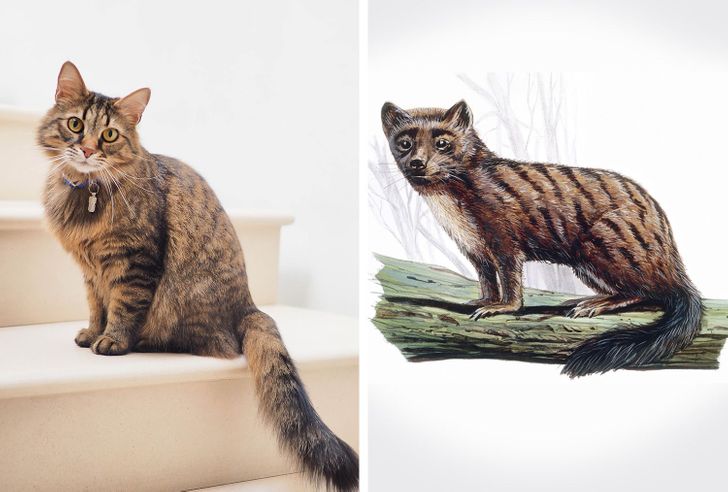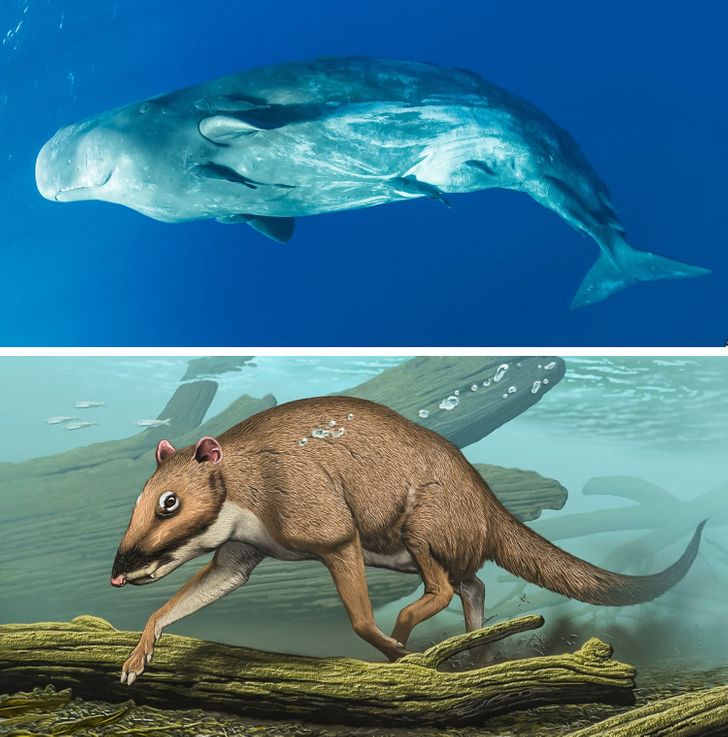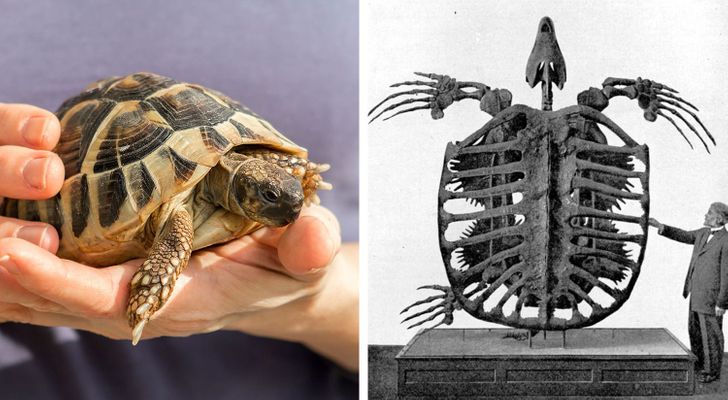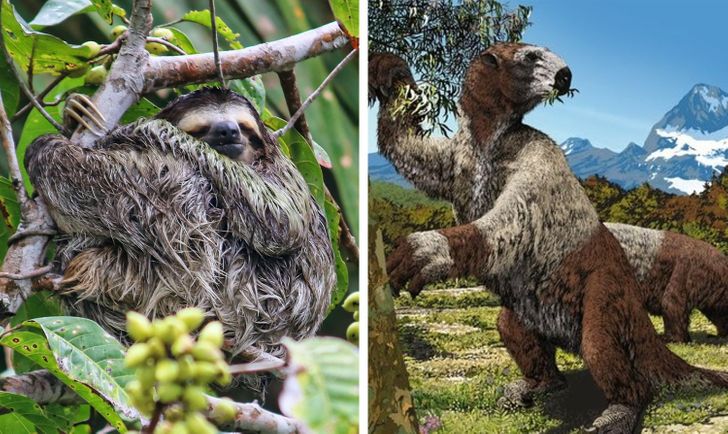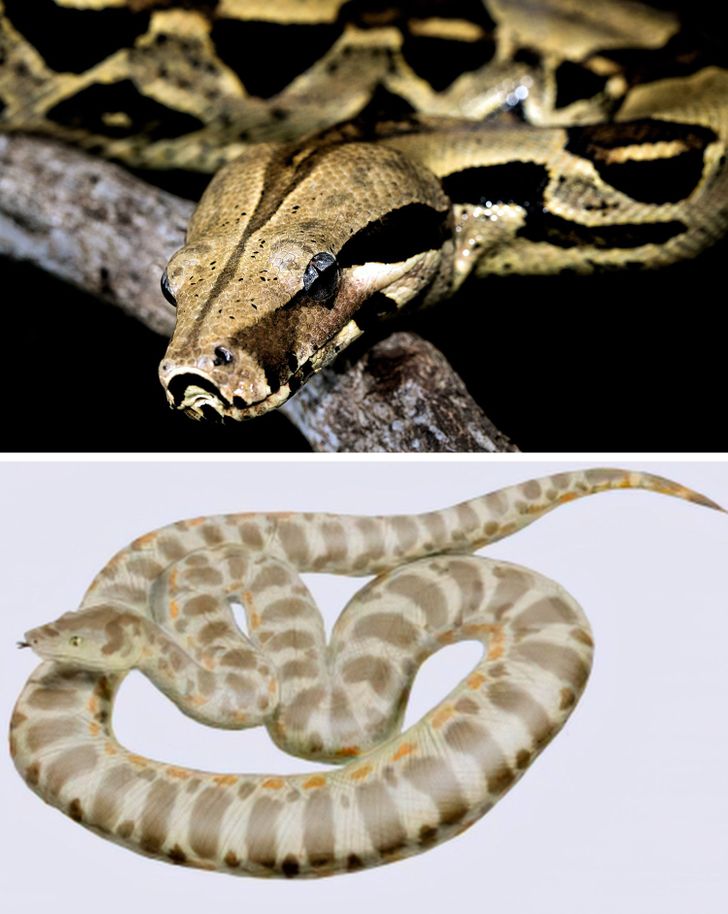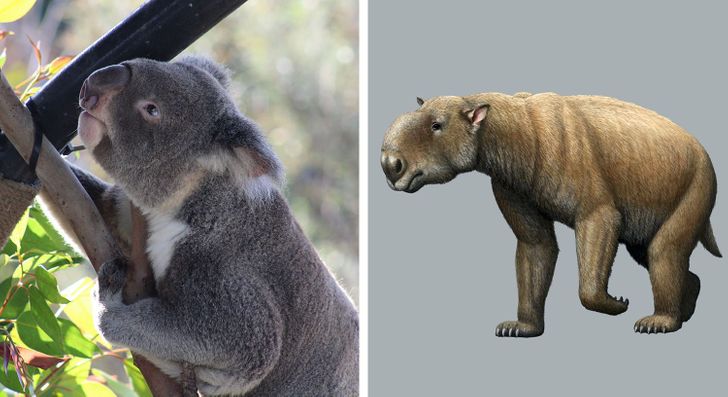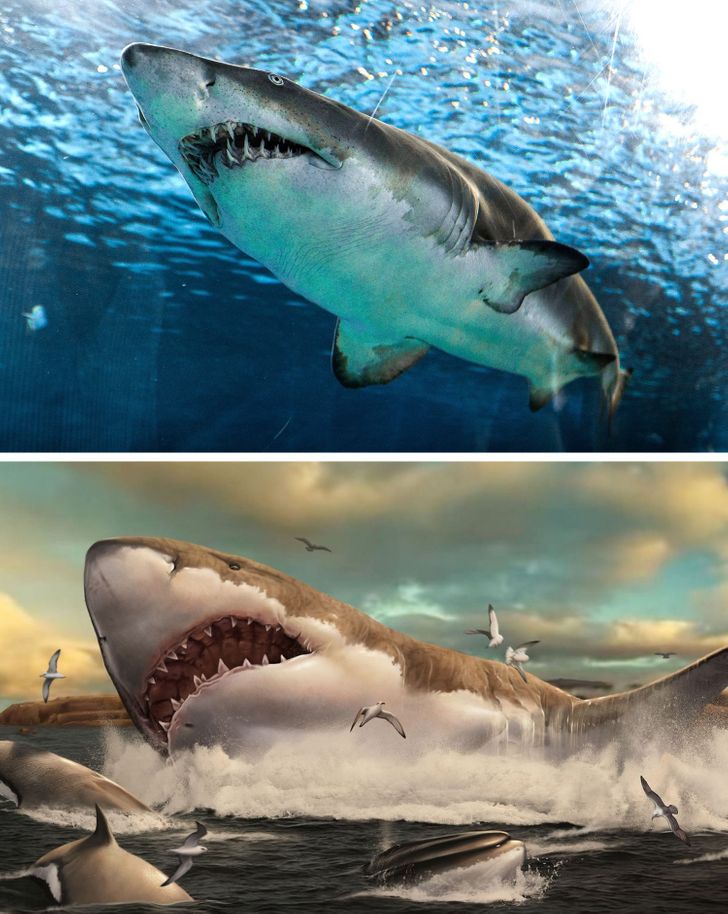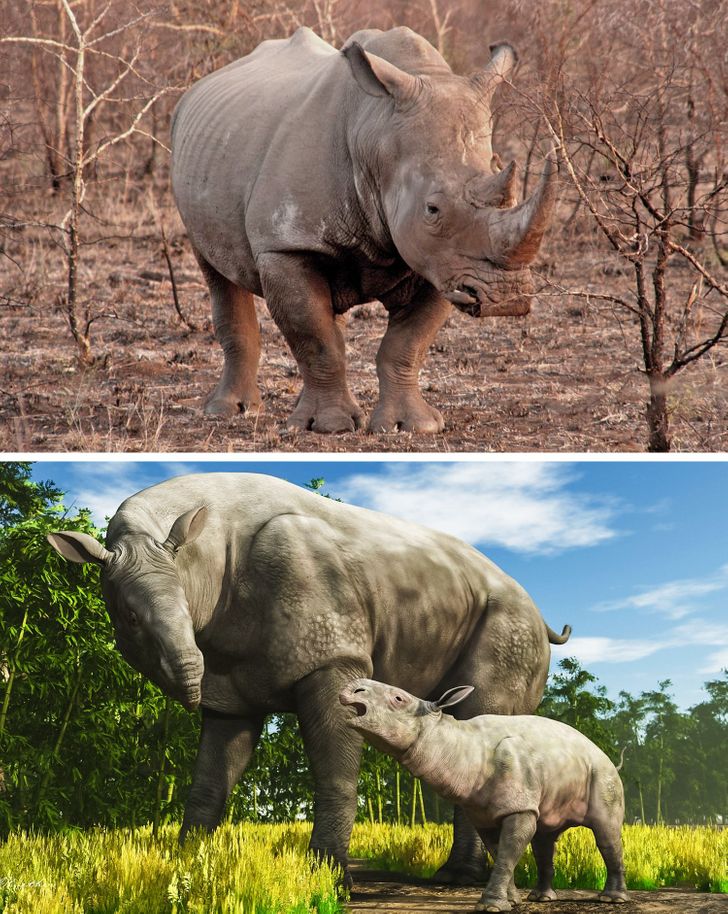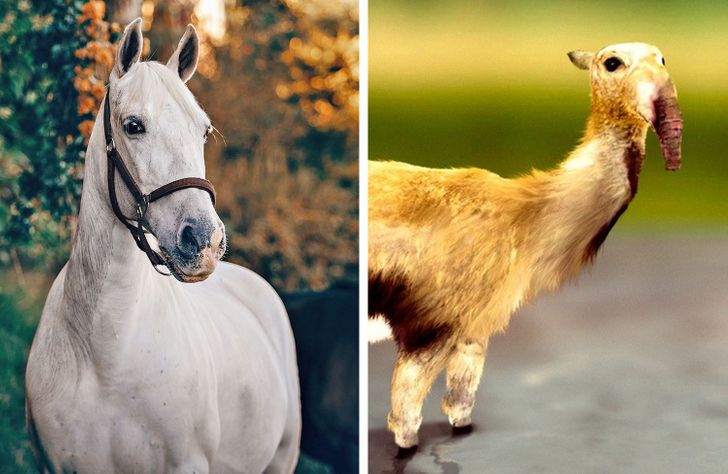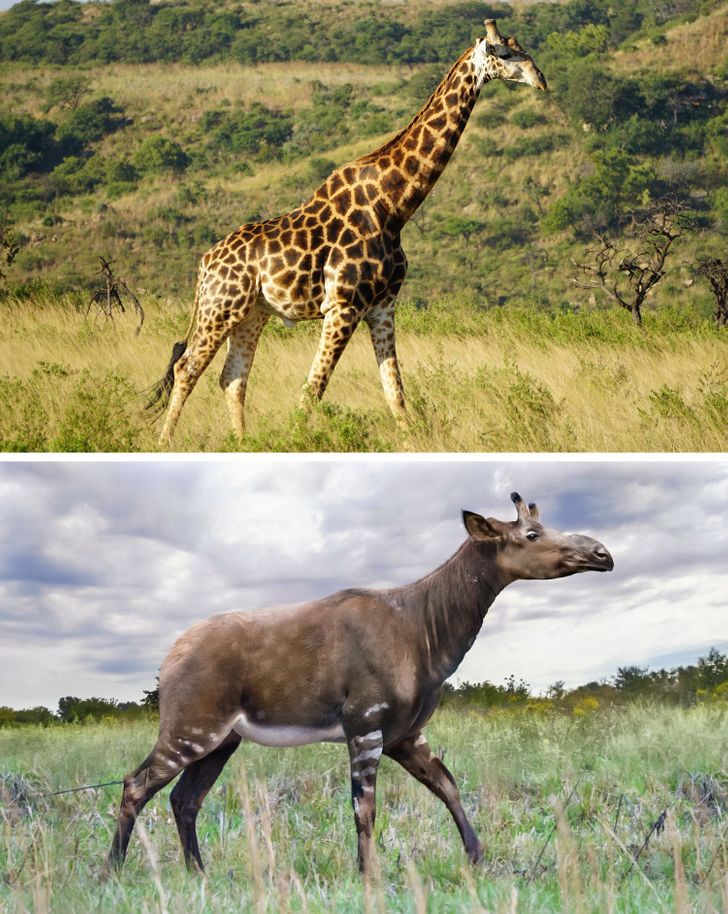ok this goat ancestor doesn't even look like they are somehow related 😳
10 Photo Comparisons Between Animals and Their Ancestors That Will Make Your Jaw Drop
Millions of years ago, creatures that would today look unfamiliar to us were walking, jumping, and running around our planet. Their appearance would easily land them roles in Jurassic Park without even taking part in the casting. Over time, evolution has made its corrections in their appearance and even behavior, which were so huge that their descendants would be scared of seeing their distant “parents” if they met them today.
Bright Side felt curious about what the relatives of animals we are used to seeing today looked like in the past. We would like to warn you right now that the appearance of the ancestors of some of our beloved animals differs drastically from what we see today.
Cat — Miacidae
A long, long time ago, one of the most popular pets today would look much different than it does now. Cats’ ancestors, Miacids, resembled today’s martens and lived in trees. They would get down only when looking for prey. By the way, these ancient animals are ancestors not only to felines but also to dogs, bears, and even seals.
Whale — Indohyus
As you might already know, the blue whale is one of the biggest aquatic mammals on the planet whose length sometimes reaches 80 feet. But few people are aware that the “parent” of this underwater giant is a raccoon-sized animal called Indohynus who not only lived on the land but was also a true vegetarian. Over time, the body shape of the Indohynus changed greatly because the animal had to find protection underwater in order to hide from predators.
Tortoise — Archelon
Archelons were the true giants of the animal world — their weight would reach the weight of today’s elephants. Though giant tortoises died more than 60 million years ago, big species still can be seen in the Indian Ocean and even on the shores of North America. However, scientists are quite skeptical about it, saying that it’s unlikely that these species come from the epoch of dinosaurs because they wouldn’t have been able to survive it.
Sloth — Megatherium
It’s not for nothing that sloths got the name they have — these slow, clumsy, and kind animals spend most of their lifetime sleeping. The giant ancestors of sloths also couldn’t boast a quick reaction — not only were Megatheriums as big as today’s elephants, but they could also weigh more than 4 tons sometimes.
Boa — Titanoboa
The ancient relative of all modern boas, the formidable Titanoboa, once lived in Latin America. The 40-foot length and colossal weight of this extinct snake didn’t prevent the Titanoboa from preserving its surprisingly peaceful personality — it is known that the giant boa fed itself exclusively on fish.
Koala — Diprotodon
Diprotodons, or giant wombats, used to be one of the most unusual representatives of the Australian fauna. These animals reached the size of modern hippos and could weigh up to 3 tons. Koalas, which were mistakenly considered the relatives of bears for a long time, are the descendants of these giant vegetarians today.
Shark — Megalodon
Sharks have been considered to be one of the most dangerous aquatic predators for a long time, but their ancestors would certainly look like even more formidable creatures to us. The size of these prehistoric gigantic sharks sometimes reached the size of a 5-story building, while the specifics of the megalodon’s body allowed it to even live in fresh water.
Rhino — Paraceratherium
The relatives of modern rhinos, Paraceratheriums, were mentioned in old Russian fairytales and legends because their habitat was located right between China and the Balkans. Moreover, the fairytale creature not only shows up in history but also in the cinematography — battle vehicles from the Star Wars movie saga were almost fully copied from the image of this ancient mammal.
Horse — Macrauchenia
It’s hard for a modern person to imagine a horse who suddenly lost its trunk as the result of evolution. However, it was this part of the body that the ancient relatives of modern ponies, donkeys, and zebras possessed. Macrauchenias looked really strange compared to saber-toothed cats and gigantic koalas.
Giraffe — Samotherium
The prehistoric ancestors of giraffes, called Samotheriums, used to live in the territory of modern Ukraine and Moldova. At that time, the future giraffes didn’t have such long necks — this distinctive part of their bodies appeared later as a result of evolution. It is believed that the males with the longest necks received more attention from the females.
Which “transformation” of ancient creatures into today’s animals seemed the brightest to you?
Bright Side has its own podcasts now. Take cool articles with you and listen to new stories whenever and wherever you want.
Comments
it looks like some nightmare creature
I'm kind of happy this thing is extinct
honestly they are all pretty creepy
good thing that we live during the times of very cute animals :D
Have you honestly looked around you? Have you travelled much and seen the Native Wildlife on each Continent? Except for Africa and South America l have.
Some of the animals around today are frightening enough let alone when you consider what their Ancestors would be like, and yet humans being around then would also have had to adapt to what they were dealing with then. However unlike Modern Humans They would Not have had to worry about being Politically Correct, they pretty much would only have to worry about Still being alive at the end of each day.
Hard as that may have been, l still envy them...lol!
Clair: hate to tell you but that's inherent survival tactics.
whoever thinks this is true is stupid
Related Reads
My DIL Broke My House Rules—I Made Her Face the Consequences

20 Bright Siders Share Stories That Prove Children Live to Tell the Truth to Anyone They Meet

12 Story Twists More Shocking Than a Hitchcock Thriller

I Threw My Stepmom Out of My Dad’s House — It’s Not a Free Hotel

12 Comics That Will Ring a Bell With Anyone Who’s Ever Fallen in Love

16 Stepparents Who Managed to Find a Key to Their Stepchildren’s Hearts

I Installed a Secret Camera After My MIL Insisted on Having Our Key

10 Small Acts of Kindness That Changed Someone’s Life Forever

20 People Who Were Lucky Enough to Meet Their Perfect Partner

I Asked My DIL to Pay Me for Babysitting, and It Shattered Our Peace

9 Must-See Nail Trends for Summer 2025

15 Texts From People Whose Logic Breaks All Boundaries

